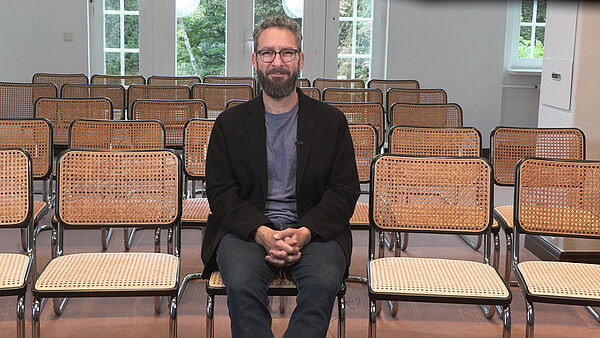
Matthew Hahn, Ph.D.
Distinguished Professor of Biology and Computer Science
Indiana University Bloomington
Born in 1975 in Hackensack, N.J., USA
B.S. in Biology, Cornell University, Ph.D. in Biology, Duke University
Arbeitsvorhaben
Evolutionary Causes and Mechanisms of Male Mutation Bias
Parents leave mutations to their children, but not always in equal amounts. In mammals, male parents transmit three times as many mutations to their children as do females. This pattern is now referred to as male mutation bias. Male mutation bias was first identified in humans in 1947, but it has since been con-firmed using DNA sequencing of genomes in multiple species. Researchers have proposed several explanations for the pattern, one of which—that the male germline replicates throughout the lifetime, while the female germline does not—became the dominant explanation in the field. However, although germline cell replication does differ between the sexes, multiple lines of evidence have emerged that cast doubt on germline replication as the main driver of male mutation bias. One of these pieces of evidence is that males also have higher mutation rates in their somatic cells. Although mutations in somatic cells are not transmitted to offspring, they are a common source of cancer, which is also overwhelmingly male-biased in humans. Once the “structural” mechanism of germline cell replication as the driver of male mutation bias is removed, we are left with multiple possible evolutionary mechanisms that could explain this pattern. These more general mechanisms could then explain differences not only in transmitted mutations, but also in mutations that drive cancer and other aging-related disease. My fellowship plan is to explore a range of evolutionary hypotheses for differences in male and female mutation rates, developing and testing predictions made by each of these hypotheses.Recommended Reading
Hahn, Matthew W., and Luay Nakhleh (2016). “Irrational Exuberance for Resolved Species Trees.” Evolution 70 (1): 7–17. https://doi.org/10.1111/evo.12832.
Hahn, Matthew W., Yadira Peña-Garcia, and Richard J. Wang (2023). “The ‘Faulty Male’ Hypothesis for Sex-Biased Mutation and Disease.” Current Biology 33 (22): R1166–R1172. https://doi.org/10.1016/j.cub.2023.09.028.
Wang, Richard J., Samer I. Al-Saffar, Jeffrey Rogers, and Matthew W. Hahn (2023). “Human Generation Times across the Past 250,000 Years.” Science Advances 9 (1): eabm7047. https://doi.org/10.1126/sciadv.abm7047.
Publikationen aus der Fellowbibliothek
Hahn, Matthew (Cambridge, MA, 2023)
The ‘faulty male’ hypothesis for sex-biased mutation and disease
Hahn, Matthew (Washington, DC [u.a.], 2023)
Human generation times across the past 250,000 years
Hahn, Matthew (New York, 2019)
Hahn, Matthew (Oxford, 2017)
Irrational exuberance for resolved species trees
Hahn, Matthew (Lawrence, KS, 2016)
Phylogenomics reveals three sources of adaptive variation during a rapid radiation
